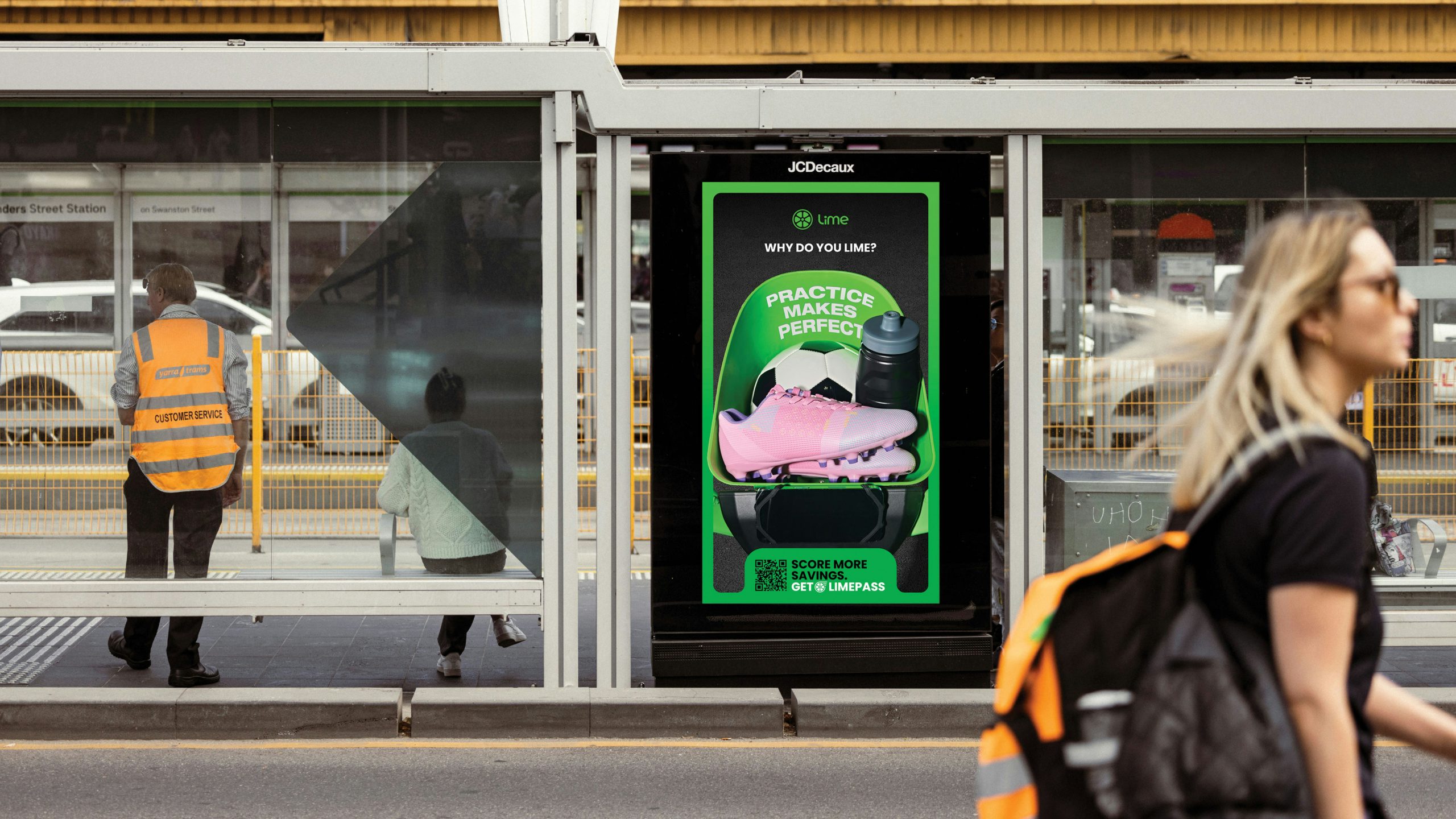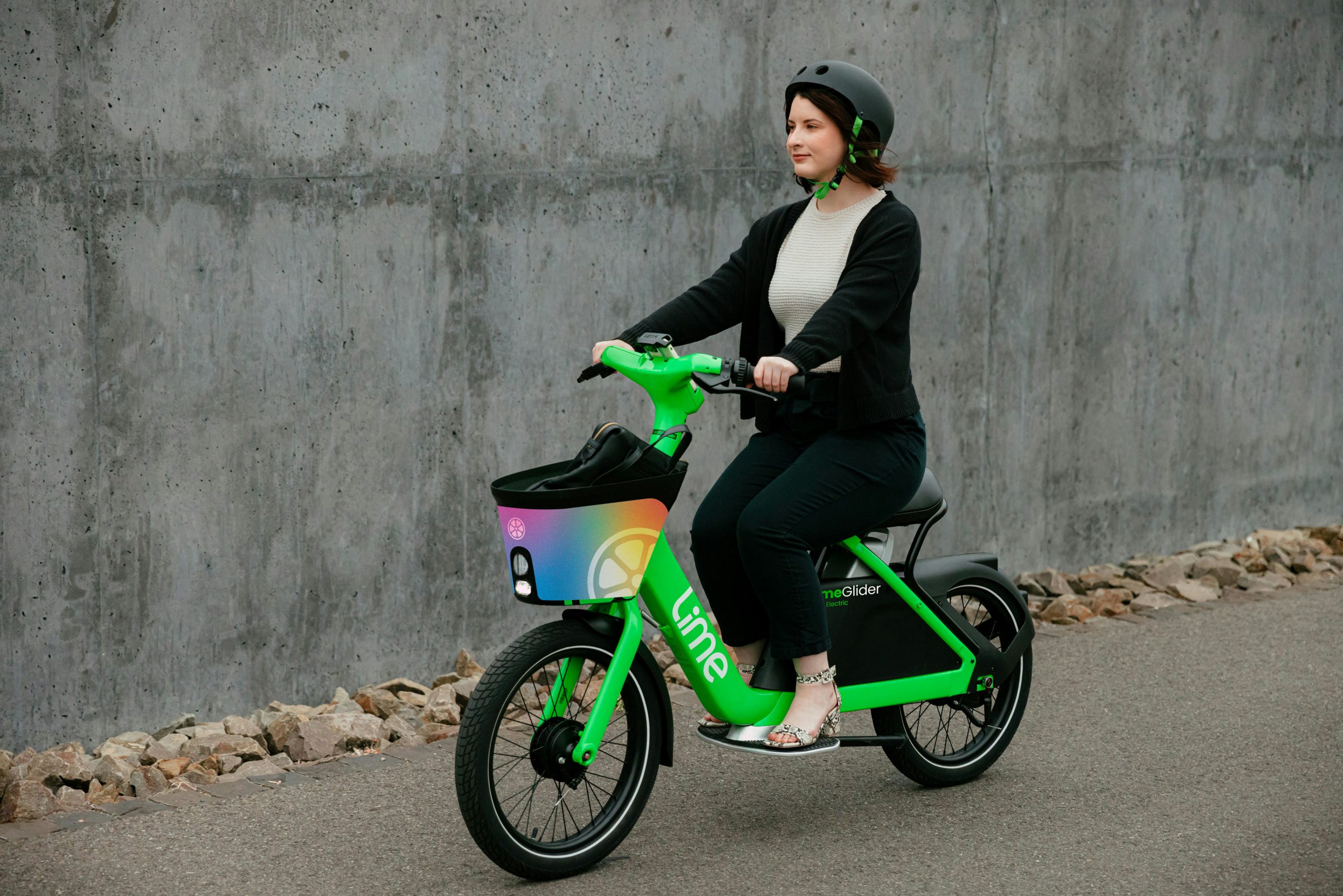How Lime became the coolest micromobility brand in town
Powered by excellent design from its in-house team, Lime has used branding, smart collabs and spontaneous endorsements to race ahead of the competition
When Timothée Chalamet arrived at the London premiere of his Bob Dylan biopic A Complete Unknown on a Lime bike, putting the kickstand down and getting out his phone to lock the bike before greeting the press, it was, although reportedly the actor’s decision alone, great publicity for the micromobility brand. But for Evan Catlett, creative director at Lime, it also felt like a pivotal moment – a sign that Lime had “entered the cultural lexicon”.
“We didn’t ask him to ride that e-bike onto the red carpet; he did it because that’s what cool Londoners do…. Slack was going crazy that day.”
Cycling is a natural fit for a city: agile, A to B, fills the gaps in transport networks without clogging the roads. But not everyone owns a bike or wants to work up a sweat to get around – especially in a city as hilly as Lime’s home of San Francisco. And while city bike schemes have been around for a while, Lime’s ascent has been more rapid. It is in part thanks to e-bike and e-scooter technology, and to the dockless model, which really unlocks the freedom you want from micromobility.
View this post on Instagram
It’s still hard to believe that the company known for its signature green vehicles is only eight years old, launching in San Francisco in 2017, with its first London pilot in 2018. Today, Lime is the most dominant brand in the sector, spread across 280 cities in 30 countries; at the end of May 2025, it reached one million global daily rides for the first time.
Getting Lime to that point, says Christian Navarro, the company’s head of brand marketing, was a matter of building a personality. “Personality – whether it’s your brand, tone of voice, how you show up, where you show up – really starts to shape how people view you,” he says. “At its highest levels, I don’t see building a brand as any different than building your own personal brand. You’ve got values, you’ve got things that you stand for, you’ve got things that you don’t stand for.”
Like most in the micromobility sector, Navarro explains that what Lime stands for is providing “sustainable, accessible transportation” – a commitment to which initiatives such as free rides on voting days look to underscore. But it is also “a joyful way to get around”, he adds. That overt joyfulness comes through in its sliced fruit logo and signature colour, as well as its campaigns, such as Ride Replay, a personalised year-in-review, styled by Lime as a Y2K-coded school yearbook.


It is Lime’s version of a growing formula, where people, used to trading their data for services or products, get something back for themselves: digestible insight and something fun to share. Navarro is ex-Spotify and worked on Spotify Wrapped early in his career. “We saw the power of this individualised and personalised storytelling,” he says. “We find that the end of the year [is] such a powerful moment to remind people of [how] you had a great year riding Lime: look how far you rode, look how many cities you rode in.”
Personalisation feeds many other projects too. The branding zenith of Chalamet’s stunt confirmed a shift that Catlett felt during his time at the brand, from needing to explain what Lime is to being able to focus instead on a “more emotional connection with our riders”.
He highlights 2024’s Why Do You Lime? campaign, a series of rider’s-eye-view photographs of e-bike baskets shot by Brian McCormick, their contents creating evocative tableaux: ‘Yes Chef’, with a pair of Crocs and box of hairnets, or ‘Practice makes perfect’, with football boots, ball and water bottle. The campaign was inspired by riders tagging the brand on social media with images of their own baskets: an example of using ‘verbatims’ to connect campaigns with real-life use cases.
What’s important when you’ve got a global brand with a visible local presence, is making sure you feel like a local
This, and other data, contributes to user research; after learning that a majority of riders were male, for example, Lime looked for ways to be more inviting and accessible to women, Catlett explains. A new LimeBike design has a “lower step through, a basket that is a little bit closer to the ground [with a] lower centre of gravity, smaller wheels”, he says, while there is also the new pedal-free, seated LimeGlider, coming to Zurich and a few US cities so far.
Projects are tailored to location. “What’s really important … when you’ve got a global brand with a visible local presence, is making sure you feel like a local,” says Navarro. Lime hopes to resonate with local riders – and avoid the kind of ad blunders that go viral for getting a market really wrong – by working with local copywriters or shooting on a city’s own streets.
Meanwhile illustration, fairly resource-heavy for Lime’s “small but mighty team”, Catlett adds, uses a kit. “You’ll have several city backdrops … and you can drop in riders with different clothing, different body types, different sexes, just everything under the sun, and different vehicle models, and build your own scene,” he says. The aim is that “people feel like we know who they are and why they Lime”.

For Lime’s “biggest Pride ever” this year, the campaign Ride Forward took place across more than 24 cities. As well as designing “fun local stickers” for helmets and signage, the project is also connected on the ground, involving investment in the form of donations and partnerships with local LGBTQIA+ organisations, as well as experiential moments, says Catlett. “We just had one at a lesbian bar in Atlanta. We have a few more coming up around the US – it’s a great way to give a human face to our riders and show that we care about the places they care about, and where they probably Lime to.”
And while prominent brand partnerships range from dating app Bumble (‘making cross-borough dating effortless’) to a collab at Copenhagen Fashion Week with Elle Denmark, others are more practical. As micromobility must connect with city infrastructure, Lime has a government relations team that works to either bring Lime into a city in the first place or refine how it works there.
An unfortunate flipside of the dockless model is that people leave the vehicles wherever they want to. To smooth things on the ground is the job of Lime’s growing local operations teams, responsible for retrieving, tidying and repairing vehicles – “and making sure that every single ride that riders take is consistent from vehicle to vehicle, and across the globe”, says Navarro.
While fines have been introduced to deter bad parking, there is more work to be done. Lime announced its London Action Plan at the start of 2025, through which it is investing £20 million to boost sustainable travel while improving parking and encouraging cycling safety.
A related project that Catlett has been working on, in collaboration with the industrial and policy teams, is a parking manual for cities. Iconography is being designed for the manuals, where the challenge is to create icons that represent both e-bikes and scooters, while also being provider-agnostic. Dominant as Lime is in the sector, when it comes to best practice, “we really want to be the leaders”, Catlett adds.
And in response to critics who feel e-bikes are a nuisance cities don’t need, Navarro suggests they might want to think about cars: “They get so much real estate in our cities, [and] people get to literally leave them on the street.”
We’re trying to help people understand that we can make cities better by taking space away from cars
Highlighting the work of swapping single parking spaces for corrals for multiple e-bikes was a 2024 campaign in London called Changing Spaces. Parking a white van, before having it painted over by artists 3D Joe & Max to look like a row of bikes and a couple of planters, it looked to offer an alternative vision for city streets. “We’re trying to help people understand that we can make cities better by taking space away from cars,” Navarro says.
In terms of next steps, Navarro talks about community-building, despite the inevitable barrier that you can’t (officially) ride a Lime with someone else. While perhaps a stretch for now – bar a Lime x Uber April Fool’s prank which introduced Lime Chauffeur, ‘an e-bike sidecar for the sustainable passenger princess’ – Lime remains ambitious. To shape the creative for all its projects, the in-house design and marketing teams work closely with central teams across the business: true brand marketing reaching every touchpoint, says Navarro.
Meanwhile, ensuring things can “move fast and smart and still stay on brand” is helped by the use of “templates, templates, templates”, says Catlett, and its central brand resource Lingo provides templates for e-bike wraps, hang tags and more: anything colleagues might need for presentations, a pop-up activation, etc.
While the approach involves some “trial and error”, says Catlett, in empowering Lime’s wider teams “to self-serve and not wait for things from us”, it seems a way of working with ease, agility and independence fitting for micromobility.




